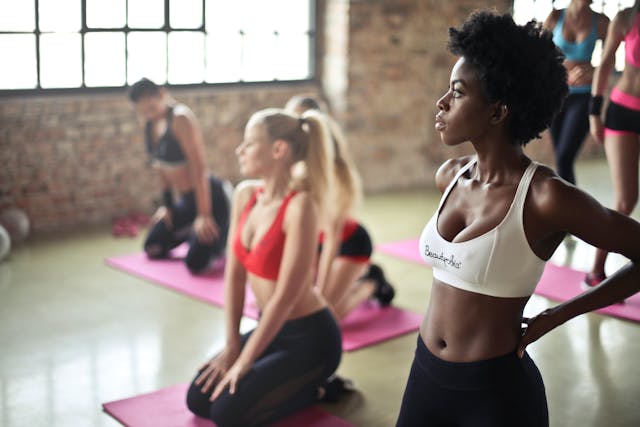The Importance of Rest and Recovery in Athletic Performance
When we think about improving athletic performance, we often focus on hard training, pushing limits, and increasing intensity. But there’s another crucial factor that’s just as important—rest and recovery. Whether you're a professional athlete or someone who loves working out, giving your body the time it needs to rest and repair is vital for achieving your best results.
Let’s dive into why rest and recovery are so important for athletes and how they can take their performance to the next level.

Why Rest Matters for Athletes
The Balance Between Work and Recovery
Training hard without proper rest can lead to burnout, injury, and fatigue. Rest is when your body repairs itself, builds muscle, and recovers energy for the next workout. In fact, muscle growth doesn’t happen during exercise; it happens when you're resting.
What happens during rest:
- Muscle repair and growth – Exercise causes tiny tears in muscles. During rest, the body rebuilds these fibers, making muscles stronger.
- Energy replenishment – Rest helps restore glycogen (the body's primary energy source) in muscles.
- Mental recovery – Resting gives athletes a mental break, reducing stress and preventing burnout.
Without adequate rest, all the hard work in the gym can go to waste. It’s about creating a balance between pushing your body and allowing it to recover properly.
Different Types of Rest and Recovery
Active Rest vs. Passive Rest
Not all rest is the same. There are two main types of recovery: active and passive.
- Active Rest: Involves low-intensity activities like walking, light jogging, or yoga. Helps improve blood flow to muscles, reducing soreness and stiffness.
- Passive Rest: Complete rest where you refrain from exercise for a period of time. Focuses on allowing muscles to fully recover without exertion.
Both active and passive rest play key roles in recovery. Active rest can be particularly helpful between intense workout sessions, while passive rest is essential after particularly tough or long workouts.
The Role of Sleep in Recovery
Sleep: The Ultimate Recovery Tool
Sleep is one of the most crucial—and often overlooked—elements of recovery. It’s during sleep that the body does most of its healing and restoration.
Why sleep is important:
- Muscle repair: Growth hormones are released during deep sleep, aiding in muscle growth and recovery.
- Energy restoration: Sleep helps restore glycogen stores, preparing the body for the next day's activities.
- Mental recovery: A good night's sleep improves focus, decision-making, and reaction times, all of which are vital for athletic performance.
For optimal performance, most athletes need 7-9 hours of sleep per night. During periods of heavy training, this may even need to be more.
Nutrition’s Role in Recovery
Fueling Your Recovery Process
Rest isn’t just about taking a break—it’s also about providing the body with the nutrients it needs to recover properly. The right post-workout nutrition can significantly enhance the recovery process.
Key nutrients for recovery:
- Protein: Helps repair and build muscle fibers. Aim for lean sources like chicken, tofu, or protein shakes.
- Carbohydrates: Replenish glycogen stores and provide energy for the next workout.
- Fats: Healthy fats are important for reducing inflammation and supporting overall body functions.
- Hydration: Replenishing fluids lost during exercise is crucial for muscle function and reducing soreness.
Eating a balanced meal or snack after exercise, with a good mix of protein and carbs, helps the body recover faster and stronger.
Listening to Your Body: Avoiding Overtraining
Knowing When to Rest
Athletes sometimes push themselves too hard, thinking that more training will result in better performance. But overtraining can lead to fatigue, decreased performance, and even injury. Rest and recovery are just as important as the workouts themselves.
Signs of overtraining include:
- Persistent fatigue or tiredness
- Decreased performance or strength
- Irritability or mood swings
- Increased resting heart rate
- Increased risk of injuries
If you notice any of these signs, it may be time to adjust your training schedule and prioritize rest.

Recovery Techniques Beyond Sleep and Nutrition
Additional Recovery Tools
There are many ways to aid your body’s recovery beyond sleep and food. Some popular recovery techniques include:
- Foam rolling or massage: Helps release muscle tension and improve flexibility.
- Ice baths or cryotherapy: Reduces inflammation and muscle soreness.
- Stretching and yoga: Improves flexibility and helps muscles relax after intense activity.
- Compression garments: Enhance circulation and reduce swelling in muscles.
- Mindfulness and relaxation: Reduces stress and improves mental recovery, which is just as important as physical recovery.
These methods can complement your recovery plan, ensuring that you’re ready for your next training session or competition.
Conclusion
Rest and recovery are not optional—they are essential for optimal athletic performance. Without proper recovery, all the effort you put into training may be wasted, and you risk injury and burnout. By balancing your workouts with active rest, quality sleep, good nutrition, and additional recovery techniques, you’ll give your body the best chance to repair, rebuild, and perform at its peak.
So, next time you’re planning your fitness routine, remember: It’s not just about how hard you train, but how well you recover that makes you a truly great athlete.












